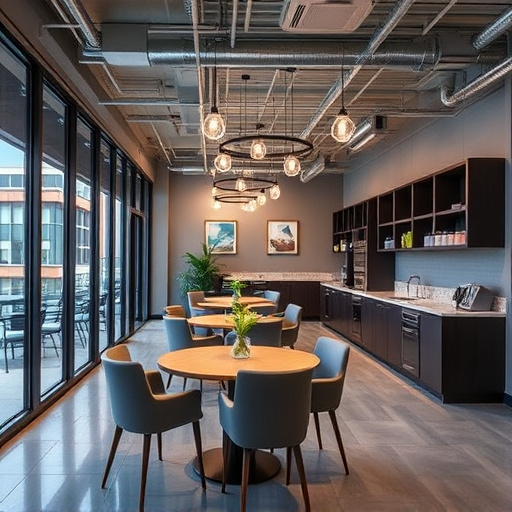Before remodeling, thoroughly evaluate your current office space and needs, including layout, operational requirements, budget, and timeline. Focus on productive areas like reception and break rooms, prioritizing collaboration zones and technology upgrades to ensure a successful, employee-centric transformation.
Planning an office remodel? Discover how to transform your space without breaking the bank. This guide walks you through essential steps, from assessing your current layout and identifying needs to setting a realistic budget and timeline. Learn how prioritizing renovations for maximum impact can create a functional, inspiring workspace that boosts productivity and cuts costs. Get ready to embark on a successful office remodel project tailored to your business’s unique requirements.
- Assess Current Space and Needs
- Set Realistic Budget and Timeline
- Prioritize Renovations for Maximum Impact
Assess Current Space and Needs

Before diving into any office remodel project, it’s crucial to take a step back and assess your current space and needs. This initial evaluation will serve as the foundation for your entire renovation process. Start by mapping out your existing office layout, noting the size of each room, the flow between spaces, and identifying areas that are underutilized or in need of significant improvements. Consider factors like natural light, ventilation, and noise levels—all essential elements that can impact productivity and employee satisfaction.
Additionally, understand the specific requirements of your business operations. Is there a need for more collaborative workspaces, private offices, or dedicated break areas? Are technological updates necessary, such as new wiring for advanced equipment or improved internet connectivity? A thorough analysis will help you make informed decisions about which aspects of your office remodel are priorities and ensure that your investment aligns with the practical needs of your organization, making it a successful transformation rather than an expensive mistake, especially in the context of a multiple room remodel.
Set Realistic Budget and Timeline

Before beginning your office remodel project, setting a realistic budget and timeline is paramount. Start by assessing the scope of work involved in transforming your space into functional, cost-effective offices. Consider not just the multiple room remodel but also any necessary home additions to accommodate your workforce efficiently. Researching average costs for similar office remodel projects in your area can give you a baseline for budgeting. This research will help ensure your financial expectations align with industry standards.
Next, establish a clear timeline that accounts for every stage of the project, from planning and permitting to construction and final inspections. A well-defined schedule allows for better resource allocation and helps prevent delays or budget overruns. Remember, effective time management is key to keeping your office remodel on track and within your set budget.
Prioritize Renovations for Maximum Impact

When planning an office remodel, prioritizing renovations is key to achieving maximum impact on your budget. Focus on the spaces and features that have the greatest potential to enhance productivity and employee satisfaction. For instance, updating the reception area or common break rooms can significantly improve first impressions and employee comfort.
Instead of tackling every room equally, consider the needs of your workforce. Modernize collaboration areas to encourage communication and creativity. Upgrade technology infrastructure for a more efficient workspace. Prioritizing these aspects ensures that your office remodel delivers tangible benefits, making it a strategic investment rather than an expensive renovation akin to whole house remodels or extensive kitchen renovations often seen in home remodeling projects.
Planning an office remodel doesn’t have to be a daunting task. By thoroughly assessing your current space, setting realistic budget and timeline goals, and prioritizing renovations based on impact, you can successfully create a cost-effective transformation that meets your business needs without breaking the bank. Embrace these steps as your roadmap for a successful office remodel project.














